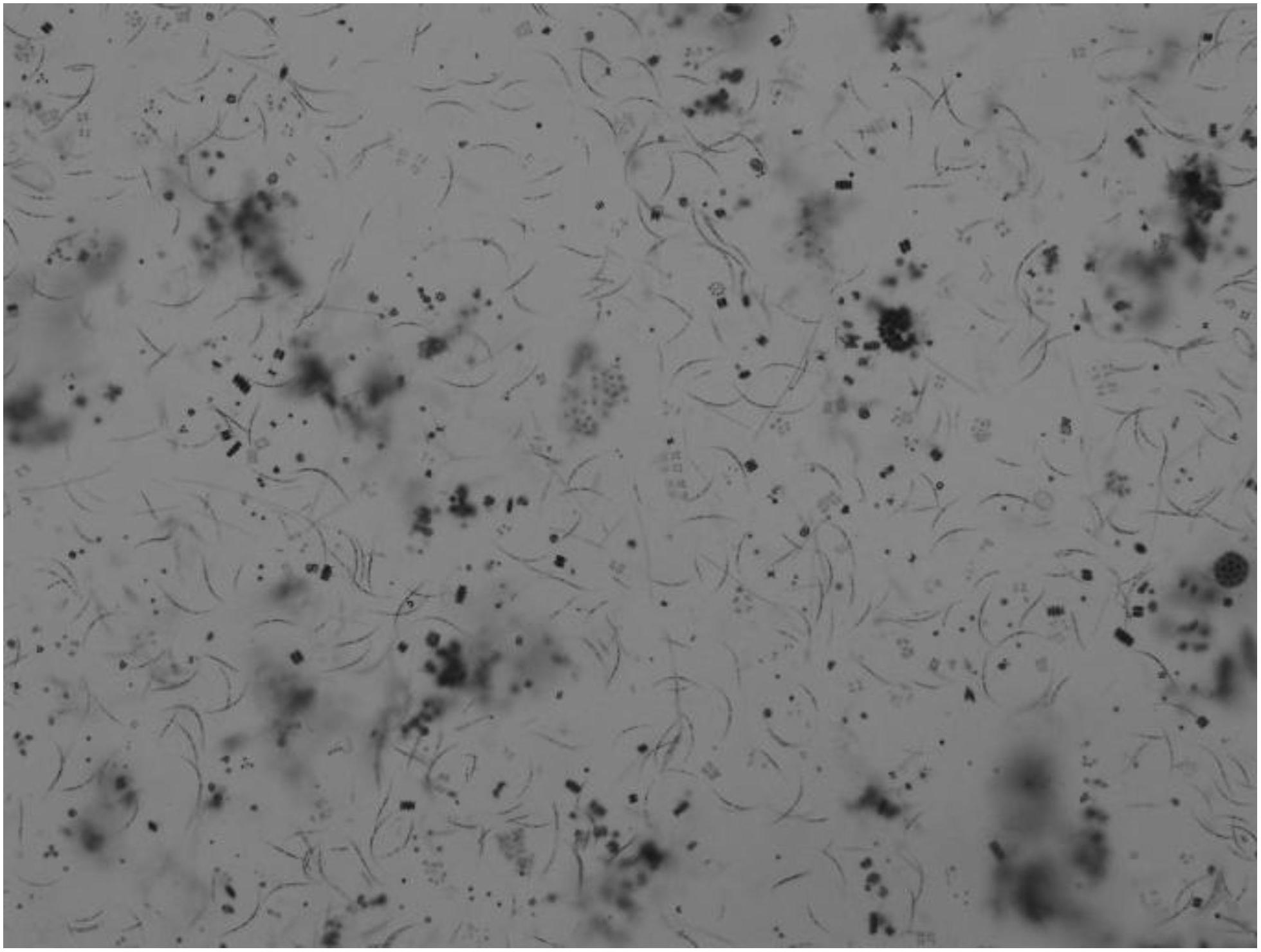Method for culturing phytoplankton with predominant chlorophyta
A technology of phytoplankton and green algae, which is applied in the field of phytoplankton cultivation, can solve the problems of side effects polluting water bodies and high costs, and achieve the effects of rich components, low cost and simple preparation methods
- Summary
- Abstract
- Description
- Claims
- Application Information
AI Technical Summary
Problems solved by technology
Method used
Image
Examples
preparation example Construction
[0031] The preparation of the culture solution in the present invention adopts the method of carrying out natural fermentation to aquatic plants, does not need to consume additional energy, and does not need to add chemical reagents, and material is environmental protection, and process is simple; The needs of algae phytoplankton are relatively close, and the ratio of nitrogen and phosphorus does not need to be adjusted; the culture medium after fermentation contains trace elements, small molecular peptides, sugars, vitamins, etc. required for the growth of phytoplankton, which can meet the growth needs of phytoplankton; the culture medium after fermentation There is a lot of organic matter in the medium, and zooplankton often reproduce very slowly in it, so the biomass of zooplankton is not large, so the selective predation pressure of zooplankton on phytoplankton is very small, which is conducive to the competition of phytoplankton in the phytoplankton of Chlorophyta. gain an...
Embodiment 1
[0036] This example illustrates a method for cultivating phytoplankton dominated by the genus Scenedesmus of the Chlorophyta by using the rot of the submerged plant Erythrina chinensis as the culture medium.
[0037] Obtain the submerged plant Erythrina fragrans, wash and weigh about 1.5 kg, place it in about 5 kg of water to rot and ferment for more than 1 month, use a 50-mesh filter to filter out large particles in the fermentation liquid, and obtain the culture liquid.
[0038] Obtain the water body in a natural pond in late spring and early summer, use 25# plankton net to filter out the large zooplankton and larger individual phytoplankton in the obtained water body, and check under the microscope to find that the phytoplankton in the filtered water body is dominant The species is Scenedesmus genus of Chlorophyta. Place the filtered water in three 10L colorless transparent glass bottles, each with a water volume of 10L, as three parallel treatments, add the above-mentioned...
Embodiment 2
[0040] This example illustrates a method for cultivating phytoplankton dominated by the genus Cellulophyta of the Chlorophyta using the rotting matter of the floating plant duckweed as a culture medium.
[0041] Obtain the floating leaf plant Duckweed, wash and weigh about 1 kg, place it in about 3 kg of water to rot and ferment for more than 1 month, use a 50-mesh filter to filter out large particles in the fermentation liquid, and obtain the culture liquid.
[0042]Obtain the water body in a natural ornamental fish pond in late spring and early summer, use the 25# plankton net to filter out the large zooplankton and larger individual phytoplankton in the obtained water body, and check under the microscope to find the phytoplankton in the filtered water body The dominant species is Cellulophyta of Chlorophyta. Place the filtered water in three 5L colorless transparent glass bottles, each with a volume of 5L, as three parallel treatments, add the above culture solution for cul...
PUM
 Login to View More
Login to View More Abstract
Description
Claims
Application Information
 Login to View More
Login to View More - R&D
- Intellectual Property
- Life Sciences
- Materials
- Tech Scout
- Unparalleled Data Quality
- Higher Quality Content
- 60% Fewer Hallucinations
Browse by: Latest US Patents, China's latest patents, Technical Efficacy Thesaurus, Application Domain, Technology Topic, Popular Technical Reports.
© 2025 PatSnap. All rights reserved.Legal|Privacy policy|Modern Slavery Act Transparency Statement|Sitemap|About US| Contact US: help@patsnap.com


